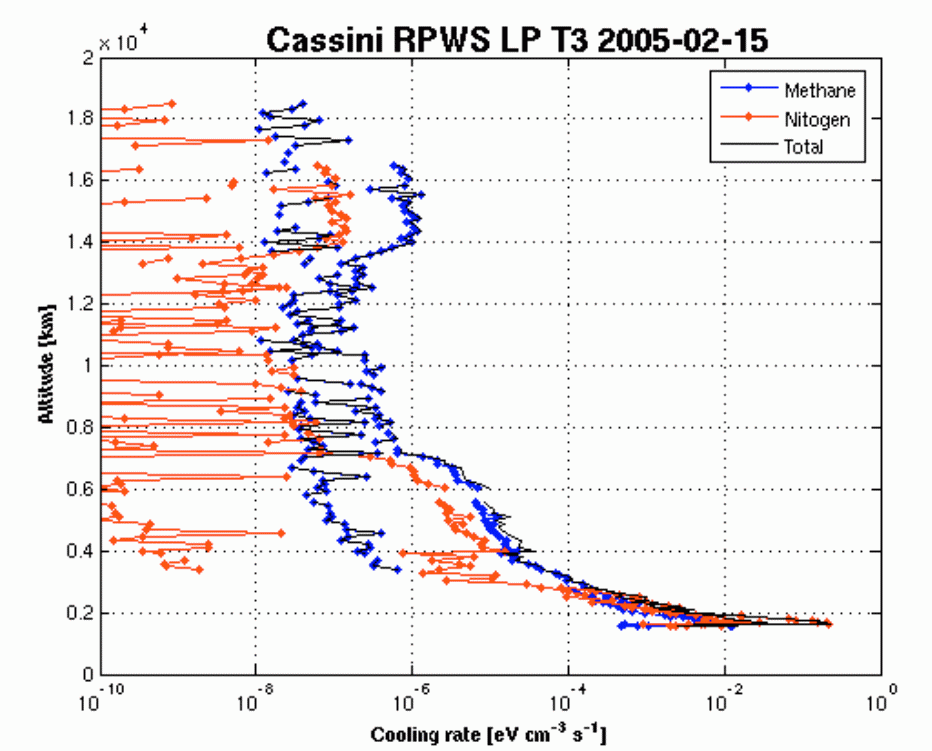Abstract
This thesis comprises a study of the ionosphere at the Saturnian
moon Titan. What has been analysed is its heat conduction and cooling
for the lower parts (1000-2000 km). Furthermore possible lost terms for
electrons have been studied. The results were examined and compared
with the theory.
The proposal for the thesis was that from raw data make profiles for
different parameters for the lower parts of ionosphere. These profiles
and data were compiled to a theory that was compared to existing
theories, conductive or thermal conductive atmosphere. All this was
done to answer the question if thermal conduction, i.e. energy flux,
can explain resulting electron temperatures.
The largest part of the work was done with MATLAB and consisted in
creating different parameters like temperatures, densities,
frequencies, cooling rates and conduction for a set of flybys,
visualize them and compare them with each other. Also a few results
that don't come directly from this analysis are shown.
The main results are mainly that all parametric curves are fairly to
very "noisy" most likely due to external influence, mainly from the
spacecraft itself. For temperatures and densities one can observe
distinct patterns, they increase respectively decrease with increasing
altitude. Frequencies and cooling rates that both depend on temperature
and density also show distinct patterns, they decrease rapidly with
higher altitude. Frequencies, i.e. collision frequencies, are much less
dependant on nitrogen than on electrons except for low altitudes. For
cooling rates the influence of nitrogen is much greater than the
influence of methane except for low altitudes. Conduction shows a
distinct pattern, it increases for low strata of air but shows only
"noise" for higher.
The conclusions are that the atmosphere on Titan is heat conductive.
This can partly be linked to thermal conduction for the magnetotail.
This conclusion is due to the fact that the conduction does not
correspond to the cooling rates, which means that there is a heat flow,
and therefore energy flux, in the ionosphere. This is assuming that all
other heat transport is very small. However,this is not the case at all
times because then the cooling rates would be equivalent to conduction.
Report
Supervisor
Jan-Erik Wahlund, Jan-Erik.Wahlund@irfu.se

Example of a calculated cooling rate profile, based on Cassini RPWS
LP observations.
http://www.space.irfu.se/exjobb/2005_erik_wikstrom/index.html
last modified onMonday, 01-Oct-2007 11:49:37 CEST

